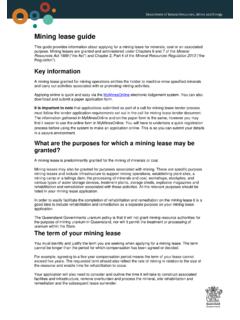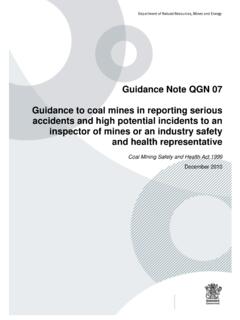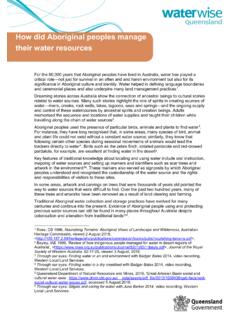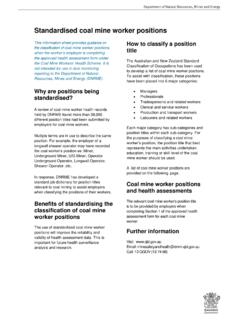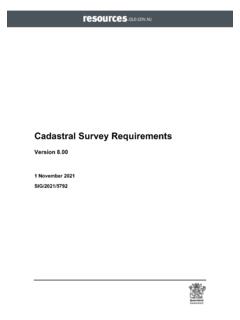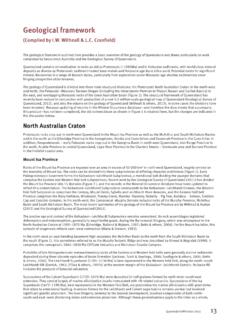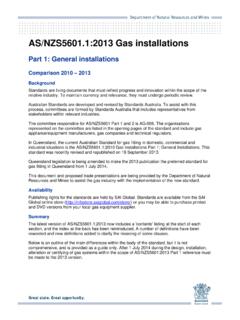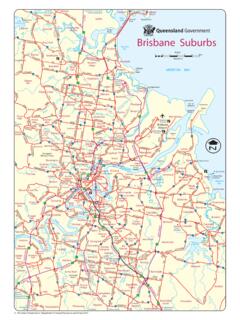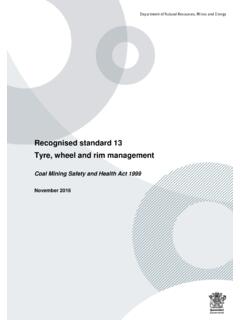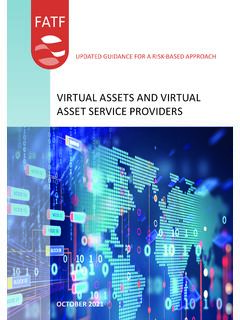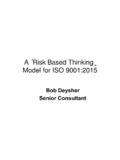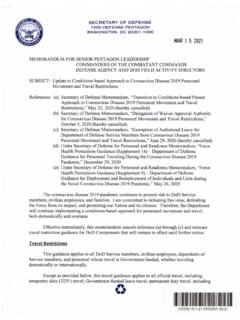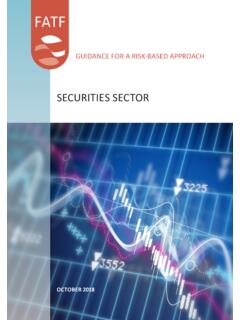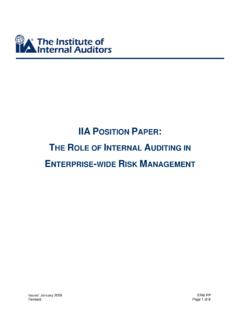Transcription of QGN 16 Guidance Note for Fatigue Risk Management
1 I QGN 16 Guidance Note for Fatigue Risk Management Coal Mining Safety and Health Act 1999 Mining and Quarrying Safety and Health Act 1999 [Type here] State of Queensland, Department of Natural Resources and Mines, 2013. The Queensland Government supports and encourages the dissemination and exchange of its information. The copyright in this publication is licensed under a Creative Commons Attribution Australia (CC BY) licence. Under this licence you are free, without having to seek permission from Department of Natural Resources and Mines, to use this publication in accordance with the licence terms. You must keep intact the copyright notice and attribute the State of Queensland, Department of Natural Resources and Mines as the source of the publication. For more information on this licence visit [Type here] Foreword from the Commissioner for Mine Safety and Health Fatigue has long been recognised as a hazard in the mining industry.
2 There has been a considerable body of research and development work done in this area in recent years. The mining industry in Queensland is aware of the hazards associated with Fatigue and is proactively seeking solutions and control strategies. This document, Guidance Note for Fatigue Risk Management , outlines the various considerations to effectively manage Fatigue . It provides mine operators (coal mine operators, mine and quarry operators) and mine workers (coal mine workers, mine and quarry workers) with a comprehensive overview of the factors that contribute to workplace Fatigue and how they can be controlled. Fatigue is no longer viewed as an issue only for the individual; rather it is a multi-facetted hazard that requires a multi-facetted approach to manage the risk. This Guidance note supersedes the 2001 Guidance Note for Management of Safety and Health risks associated with Hours of Work Arrangements at Mining Operations produced by the then Department of Natural Resources and Mines.
3 The knowledge and application of evidence based Fatigue risk Management practices has increased dramatically since 2001, and this guide incorporates information, research and good practice from a number of sources. It provides a human factors approach acknowledging the inter-relationship between people, workplace and Management factors influencing Fatigue in the workplace. This guide addresses the Fatigue -related factors in all elements of the system. The goal is to reduce the likelihood of Fatigue -related incidents or errors. This document was prepared to assist mine and quarry operators and workers in taking the necessary measures to control the risks associated with Fatigue . Stewart Bell Commissioner for Mine Safety and Health The interaction of human factors [Type here] Acknowledgements This guide is based on the Industry and Investment New South Wales (NSW) document, Fatigue Management plan: a practical guide to developing and implementing a Fatigue Management plan for the NSW mining and extractives industry, which has been developed and endorsed by the NSW Mine Safety Advisory Council.
4 The NSW publication also used content from the joint WorkSafe Victoria and WorkCover New South Wales Guidance ( Fatigue - prevention in the workplace). The Department of Natural Resources and Mines (DNRM) acknowledge the assistance of Industry and Investment NSW in allowing the use of the document in developing this guide. In the development of this guide a number of other Fatigue Guidance publications were consulted as well as research on sleep, Fatigue , sleep disorders and other related issues. This guide received input from and review by the Queensland Mine Safety and Health Advisory Committee (QMSHAC) and Queensland Coal Mine Safety and Health Advisory Committee via the joint Fatigue Working Party. Organisations represented on the QMSHAC Fatigue Working Party are: the Australian Workers Union; Construction, Forestry, Mining and Energy Union (Mining and Energy Division); Queensland Mine Safety Advisory Committees; DNRM Safety and Health and Queensland Resources Council (QRC).
5 [Type here] Guidance Note QGN 16 Guide to Fatigue Risk Management This Guidance Note has been issued by the Mines Inspectorate of the Department of Natural Resources and Mines (DNRM). It is not a Guideline as defined in the Mining and Quarrying Safety and Health Act 1999 (MQSH Act) or a Recognised Standard as defined in the Coal Mining Safety and Health Act 1999 (CMSH Act). In some circumstances, compliance with this Guidance Note may not be sufficient to ensure compliance with the requirements in the legislation. Guidance notes may be updated from time to time. To ensure you have the latest version, check the DNRM website: or contact your local Inspector of Mines. North Region PO Box 1752 Townsville Qld 4810 Ph (07) 4447 9248 Fax (07) 4447 9280 North Region PO Box 334 Mount Isa Qld 4825 Ph (07) 4747 2158 Fax (07) 4743 7165 North Region PO Box 210 Atherton Qld 4883 Ph (07) 4095 7023 Fax (07) 4095 7044 South Region PO Box 1475 Coorparoo Qld 4151 Ph (07) 3330 4272 Fax (07) 3405 5345 Central Region PO Box 3679, Redhill Rockhampton Qld 4701 Ph (07) 4936 0198 Fax (07) 4936 4805 Central Region PO Box 1801 Mackay Qld 4740 Ph (07) 4999 8511 Fax (07) 4999 8519 [Type here] Contents Acknowledgements i Contents iii Purpose of this document 1 Glossary 2 Preface 5 Obligations under Queensland legislative and regulatory requirements 5 Obligations for persons 5 Obligations of holders, operators and SSEs 5 Obligations to ensure an acceptable level of risk is achieved 6 Obligations for consultation with workers 7 Obligations for planning, organisation, leadership and control 7 Summary 8 What is Fatigue and why is it a problem?
6 (Chapter 1) 8 Who needs a Fatigue risk Management plan? (Chapter 2) 8 Developing and implementing a plan to manage the risk of Fatigue (Chapter 2) 8 Consultation (Chapter 3) 8 Role clarity (Chapter 4) 8 Risk Management (Chapter 5) 9 Documentation (Chapter 6) 9 Implementation (Chapter 7) 9 Evaluation (Chapter 8) 9 1. Introduction 10 Background 10 2. Fatigue risk Management plan: development and implementation overview 12 Introduction 12 approach 12 Resources needed for an effective Fatigue risk Management plan 14 3. Consultation 15 Introduction 15 4. Roles and responsibilities 16 Operator/SSE 16 Mine workers (or coal mine workers) 16 Who should be involved in implementation of Fatigue prevention and Management 16 approach 17 5. Fatigue risk Management 19 Introduction 19 Hazard identification: identifying factors that may contribute to Fatigue 20 Risk assessment 22 Risk control 31 [Type here] Process for using the risk factor and control tables (Tables 1-4) 33 Evaluation 45 6.
7 Fatigue risk Management plan documentation 46 7. Fatigue risk Management plan implementation 47 Introduction 47 Timeframes 47 Training 47 Communication 48 Responsibilities 48 Supervision 48 Reporting 48 8. Fatigue risk Management plan: monitoring and evaluation 49 Appendix 1: Suggested components of worker (and supervisor) Fatigue risk Management training 50 Appendix 2: Tips for individuals on avoiding Fatigue 51 Appendix 3: Accessing further resources and references 52 Appendix 4: Principles for risk Management scoping and review to assist with planning the Fatigue risk assessment 55 Appendix 5: Key points for journey Management or commute Management plan 57 List of tables Table 1 Direct risk factors 36 Table 2 Contributing risk factors 40 Table 3 Contributing risk factors: Work design and task specific factors 42 Table 4 Contributing risk factors: Individual and site specific factors 44 List of figures Figure 1 Fatigue risk Management plan: development and implementation overview 13 1 Purpose of this document Guidance on how to systematically manage Fatigue risks The purpose of this guide is to provide Guidance to mining (and coal mining) operations on how to systematically manage Fatigue risks in the workplace so that the obligation holders comply with the legislative framework.
8 The guide will help sites develop and implement a Fatigue risk Management plan which will contain strategies to effectively control the risks of Fatigue . It sets out a risk Management approach based on consultation with the workforce. The approach requires that mine (including coal mine) sites: identify the hazards of Fatigue assess the risks of Fatigue using available scientific evidence and current practice* implement effective risk control measures monitor and review regularly the effectiveness of the controls. Plans must cover Fatigue risk factors, and Fatigue contributors as well as site-specific needs The guide is not prescriptive, which means that individual operators and sites can develop a plan that is specific to their needs. However, all plans should address each of the main areas identified in this document. Some smaller sites and quarries may determine that they do not have the Fatigue risk factors that apply to many operations that operate 24 hours. They may find that their planning for Fatigue will include a risk assessment indicating that they have a low risk of Fatigue , rather than developing a plan.
9 The Management of Fatigue should also be incorporated in the overall safety and health Management system. * Specific requirements for risk assessment for personal Fatigue apply under the Coal Mining Safety and Health Regulation 2001(CMSH Regulation), and 2 Glossary Term Description Active work Total time spent at work including overtime. This does not include time travelling to or from the work site or rest breaks during shifts. BIBO BIBO (bus in/bus out) can be used to describe sites where workers are bussed to and from site on a daily basis. This does not necessarily mean that a residential camp is provided it may be to and from a township. Commute Commute is the term given to the journey for a worker to and from their permanent home, or in some cases, the site accommodation to the site. It may involve air travel, driving, company provided bus, car pooling or other means of transport. The commute can involve both a daily commute to the mine site (or coal mine site) and, in some cases, a commute to the worker s permanent home at the beginning and end of a work cycle or roster.
10 Commute Management plan or journey Management plan The commute (or journey) to and from the mine site can involve significant distances of driving, bussing (or flying) for some workers. This can add a number of hours to the period that workers will be awake (see wakefulness). It is important for sites to consider factors such as number of hours driving to and from site on a daily basis, distances travelled, and/or likely number of hours driving before and after rosters. Sites should also have a change Management process in place for workers to notify the site designate for changes to their journey plan. This information forms the commute Management or journey Management plan for workers. Consultation Consultation with workers is discussion between the site senior executive or supervisors and affected workers about a matter with the aim of reaching agreement about the matter. Further requirements for consultation are specified in legislation and in this guide. DIDO DIDO (drive in/drive out) is the term for sites where workers travel to site by road, without air travel being provided for access to the site for all workers.

